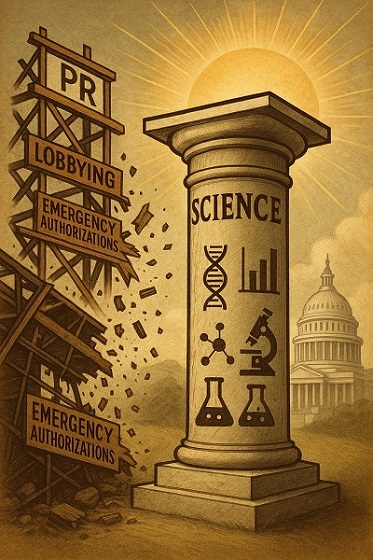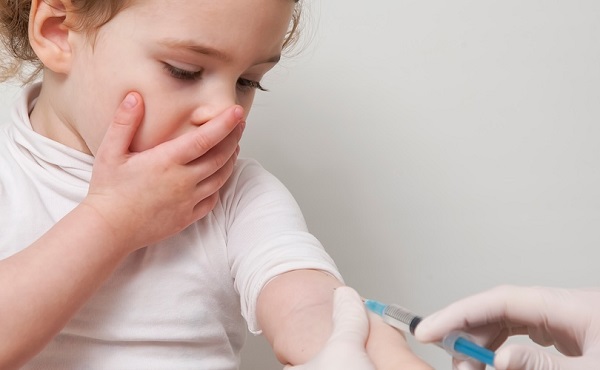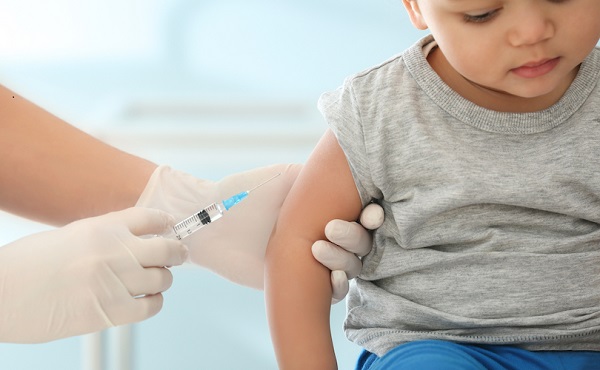Health
Kennedy sets a higher bar for pharmaceuticals: This is What Modernization Should Look Like

 James Lyons-Weiler
James Lyons-Weiler
What People, Universities, and Pharma Do Not Yet Understand About the Kennedy Regulatory Bar: It Signals the End of the Regulatory States of America.
Science must outlive the PR cycle.
Modernization, as used today by industry lobbyists and public health officials, often amounts to a euphemism for deregulation: fewer checks, less transparency, and faster product pipelines with fewer questions asked. In contrast, Secretary Robert F. Kennedy Jr.’s approach to public health modernization is actual modernization—where rigorous science, true accountability, and unwavering public safety form the non-negotiable baseline.
The Kennedy Regulatory Bar isn’t a buzzword, and it’s certainly not a rhetorical device. It’s an operating philosophy grounded in scientific integrity and public duty. For those who understand regulatory policy only as an obstacle to commercial throughput, the Kennedy Bar feels like a threat. But to those who understand what science is—a falsifiable, ethical, and reproducible method of discovering truth—it represents nothing less than the restoration of sanity.
Defining the Kennedy Regulatory Bar
Secretary Kennedy has made his expectations perfectly clear. In his own words:
“Journalists like yourself assume that vaccines are encountering the same kind of rigorous safety testing as other drugs, including multiyear double-blind placebo testing. But the fact is that vaccines don’t.”
— Interview, STAT News, Aug. 21, 2017
“By freeing [vaccine makers] from liability for negligence, the 1986 statute removed any incentive for these companies to make safe products. If we want safe and effective vaccines, we need to end the liability shield.”
— Press Statement in Support of HR 5816, Sept. 26, 2024
“Mr. Kennedy believes vaccination should be voluntary and based on informed consent. For consent to be truly informed, the underlying science must be unbiased and free from corporate influence.”
— Campaign FAQ – Vaccines, Kennedy24.com, Aug. 15, 2023
“My mission over the next 18 months… will be to end the corrupt merger of state and corporate power.”
— Campaign Announcement Speech, Boston, Apr. 19, 2023
These principles, articulated repeatedly by Sec. Kennedy across media interviews, press events, and official communications, form the foundation of what we now call the Kennedy Bar.
The Kennedy Regulatory Bar: Five Core Standards
Rigorous Science: Long-term, double-blind, placebo-controlled trials are the gold standard and must not be circumvented. This is but one example. All of biomedical science should be upgraded to highest standards.
Restored Liability: No blanket immunity for manufacturers; liability is essential to safety. This flies in the face of concerted efforts by Pharma to expand liability exemptions (e.g., PREP Act).
Transparency: All trial data must be made publicly available in machine-readable form—no redactions, no gatekeeping. Collins failed to enforce this, and the failure was noted.
Independent Oversight: Regulatory decisions must be made by individuals and boards free of industry conflicts of interest. This includes, but is not limited to, vaccines, drugs, devices, and procedures.
Informed Consent: Patients must receive full, truthful information about benefits and risks—without coercion or censorship, and their rights to free, prior, informed consent are absolute.
These are not radical ideas. They are what science used to be before it was rebranded as a partner to commerce.
Why “Banning the mRNA Vaccines” Isn’t Necessary—If the Regulatory State Is Fixed
Some critics ask: Why not just ban mRNA vaccines outright?
The question misunderstands both the Kennedy Bar and Secretary Kennedy’s governing philosophy. Banning an entire class of biomedical products by executive fiat would mirror the very authoritarianism that corrupted the regulatory state in the first place. The goal is not to replace one top-down mandate with another—it is to restore bottom-up scientific validity, where products succeed or fail based on their actual merit, risk profile, and necessity.
Under the Kennedy Bar, no product—mRNA or otherwise—can bypass the full burden of proof:
- Did it go through long-term, double-blind, placebo-controlled trials?
- Were all adverse events transparently reported and analyzed?
- Was there independent oversight?
- Can the public access the raw data?
- Was informed consent meaningfully obtained?
If the answer is no—as it has been for many mRNA formulations—then the product simply fails to meet the regulatory standard. No ban is needed. Reality disqualifies it.
The Kennedy strategy is structural, not performative. It focuses on building a regulatory ecosystem that is incapable of licensing unsafe or ineffective products. This is a stronger safeguard than any prohibition. Rather than banning, Kennedy’s approach makes bad science impossible to pass off as medicine.
Once transparency is non-negotiable…
Once liability is restored…
Once regulatory capture is dismantled…
Then any product built on hype, shortcuts, or undisclosed risks—whether mRNA or otherwise—will collapse under the weight of real scrutiny.
That is not censorship. That is civilization defending itself by enforcing its own standards.
Integration Over Isolation
What sets Kennedy’s approach apart is not only the bar he sets for scientific integrity, but it is obvious this is how he is implementing it across government. As Secretary of Health and Human Services, he is already working to integrate the work of all HHS agencies—CDC, NIH, FDA, CMS, HRSA, and others—into a coherent, collaborative ecosystem. No longer will one hand of government ignore the consequences of the other.
Where prior administrations tolerated bureaucratic silos and jurisdictional loopholes, Kennedy insists that scientific rigor be institutionalized—not merely idealized. Under his leadership, agencies are being asked to communicate better, share safety signals earlier, co-design surveillance systems, and synchronize risk communication strategies.
This is not just about stopping regulatory failure. It’s about building functional synergy between the very institutions tasked with protecting public health.
The Academy’s Crisis of Conscience
Many universities have not yet recognized that the Kennedy Bar creates a mirror they cannot easily turn away from. For decades, medical schools and public health departments have received lavish funding from pharmaceutical companies and government agencies with revolving doors. This arrangement has subtly—sometimes overtly—coerced researchers to conform to sponsor expectations, burying negative results and rewarding compliance with publication and promotion.
Secretary Kennedy has quietly changed the rules of engagement. Prestige will no longer in the place of principles. A new standard is emerging, and it doesn’t care what editorial board endorsed your work—it asks what you measured, how long you observed it, and who paid you to interpret it.
I recently gave a speech “How to Speak MAHA” to a collection of research administrators at midwestern state Universities. They did not grasp the reality that those Universities who are cheerleading their researchers to submit more, not fewer, grant proposals in response to calls for proposals to transform medicine will be scheduled for prestige and more funding. Good actors will be rewarded. Those obsessed with their bottom lines will have to find funding elsewhere. Those publishing in sketchy journals against the recommendations of HHS might suffer a ding in their grant scores.
The message from this administration is simple, and our universities now face a choice: modernize into true scientific integrity, or double down on performative consensus. The Kennedy Bar forces the question: Is your institution educating scientists—or training enablers? No grant is worth the erosion of public trust. No journal impact factor outweighs the duty to truth. The age of science as branding is over. The age of science as science—open, accountable, and rigorous—has returned.
The Industry’s Real Dilemma
Pharma does not fear Kennedy because he’s against innovation. They fear him because he demands real innovation—scientific advancements that can survive public scrutiny, not just regulatory maneuvering.
For decades, the vaccine industry has relied on two tricks: (1) measuring success through surrogate endpoints like antibody titers rather than clinical outcomes, and (2) conducting studies in silos—never long enough, never with full data access, and almost never with independent safety boards. This system has produced a torrent of marginally tested products with maximum immunity from liability and minimal transparency.
Under the Kennedy Bar, the era of “emergency forever” is over. The industry must either meet real scientific thresholds or lose the public’s trust—entirely. This is not punishment. It’s evolution. It’s the grown-up phase of medicine. A moment of maturation for a sector that has long preferred speed over scrutiny, revenue over rigor.
And it comes with a choice: evolve or… be revealed.
Outflanking the “Modernization” Rhetoric
The PR pivot has already begun. Corporate spokespeople and foundation-backed academics are working overtime to redefine “modernization” as “streamlining,” “accelerating,” or “expanding access.” But these are euphemisms for lowering standards, usually without public debate.
Kennedy’s modernization is not deregulation. It is re-regulation—the restoration of the scientific method, the demand for data, and the end of special pleading. His is not a revolution in tone, but in epistemology. He is not rebranding trust—he is rebuilding it.
Science Must Outlive the PR Cycle
Regulatory systems that abandon the scientific method for public relations will inevitably collapse. The people know. They have lived the adverse events. They have watched silence fall where transparency was promised. They’ve seen academic journals censor, media outlets spin, and regulators hedge their language to protect careers rather than lives.
The Kennedy Bar is not a barricade—it is a foundation stone. It does not prevent innovation. It ensures that innovation is real.
So to the regulators: Your authority does not come from secrecy—it comes from public trust.
To the industry: Your survival depends on the integrity of your products, not the slickness of your press kits and forward-looking statements.
And to the universities: Your legacy will not be measured in grants received, but in truths defended.
Those who come up to the bar will see not only translational success, but will also transformational success.
And they will sleep better at night.
Popular Rationalism is a reader-supported publication.
To receive new posts and support my work, consider becoming a free or paid subscriber.
Subscribe to Popular Rationalism.
And check out our awesome, in-depth, live full semester courses at IPAK-EDU. Hope to see you in class!
Health
Medical experts urge Supreme Court to protect women’s sports from ‘transgender’ males in landmark case

A photo of the winner’s podium, captured by Elizabeth Wilson, mother of Ahnaleigh Wilson, who placed second. The faces of the other athletes are blurred as they are minors, and parental consent was not obtained. May 18. 2024, Cashmere, WA.
From LifeSiteNews
Sex ‘cannot be changed,’ and girls forced to compete against gender-confused males ‘face unequal competition’ and ‘higher injury risk,’ the American College of Pediatricians warns.
As the U.S. Supreme Court prepares to hear two cases that may settle whether states are legally permitted to maintain the integrity of girls’ and women’s sports, medical experts have filed a brief urging the justices to allow states to protect female student athletes from being forced to compete with gender-confused males.
They cite the unfairness and dangers of “prioritiz[ing] gender ideology over biology.”
In the two cases, Little v. Hecox and West Virginia v. B.P.J., lower courts have undermined women’s sports laws and forced schools to let boys compete in female sports.
‘Transitioning’ to a different sex is biologically impossible’
The American College of Pediatricians (ACPeds) – one of the nation’s leading science-oriented medical organizations – explains in its brief that “When males compete in female categories, girls predictably lose roster spots and scholarships, face unequal competition, and in some sports bear higher injury risk. Those are real medical and developmental harms to minors … sex-separated teams are evidence-based safeguards for fairness and equal opportunity.”
“Sex is not assigned, and it cannot be changed. It is a stable biological reality, and grounding athletic classifications in that reality is necessary to maintain fairness,” explains ACPeds.
They remind the justices that “Biological sex [is] an immutable and objectively verifiable trait” and that “‘Transitioning’ to a different sex is biologically impossible.”
‘Testosterone suppression does not eliminate male performance advantages’
Across all sports, “men outperform women by margins ranging from 10% in swimming and rowing to over 50% in baseball pitching,” the brief explains. “And hormone suppression does not close the gap: even after years of treatment, male athletes retain strength and endurance levels above those of female peers … athletic advantages that hormone suppression and surgeries cannot erase.”
“While dismissing the well-documented physiological differences between males and females, the [lower courts] embraced the unproven claim that identity and hormone [use] can erase sex-based advantages,” wrote the health professionals. “But that is false: the evidence shows these differences are in fact sex-based, not hormone level- based, and those differences amply justify sex segregated sports—and associated intimate spaces such as locker rooms.”
ACPeds is not the only group urging the Supreme Court to rule in favor of allowing states to protect girls’ sports competitions from gender-confused males.
Heroic former “transgender”-identifying individuals Billy Burleigh, KathyGrace Duncan, Laura Perry Smalts, and Jane Smith filed a brief in support of the ability of states “to protect young people from the harms of transitioning by not ‘affirming’ a student’s perception as a member of the opposite sex and instead maintaining separate sports teams for girls and boys.”
They contend that “research shows that an increasing number of youth and adults are detransitioning, indicating harm and lack of efficacy of the interventions” to chemically and surgically transition young people.
Riley Gaines and 32 current and former college athletes have filed a brief, explaining to the nine justices that they have been “harmed by the rules of college sports governing bodies that have authorized and continue to authorize men to take women’s places and share women’s locker rooms, showers and other private spaces in college sports.”
“The transgender eligibility rules of college athletic associations and conferences have system-wide discriminatory impacts on women,” write the former college athletes, who say they “have been harmed by the college sports governing bodies imposing transgender eligibility rules.”
Autism
Autism – what we know

 Malone News
Malone News
Science backs up President Trump’s statements
Big-pharma is big mad.
The Trump administration is challenging conventional medicine and science in making this a priority. They are searching deeper, going beyond big-pharma-funded studies that have distorted the concept of “evidence-based” medicine and science.
If you haven’t listened to the press conference from yesterday, please do so. At the very least, listen to the opening statements. For brevity, I cut out a few of the speakers that weren’t making policy statements and some of the “big, beautiful bill” questions towards the end of the press conference.
(Video starts at 50:20)
As President Trump delves into this press conference, he specifically states that:
“I’m making these statements from me.”
“I talk about a lot of common sense.”
“This will be as important as any single thing I’ve done.”
Read that last statement again. Secretary Kennedy and MAHA have President Trump’s full support! More than that, these issues are critically important to President Trump.
In this press conference, President Trump states explicitly that no drug should be recommended for pain in pregnant women. That pregnant women should try their hardest to avoid pain medications.
He also states that children should not be given vaccines in large combinations at a young age.
We all know that all vaccines have risks; some vaccines have much higher risks. The compounding effects of medicines are a real issue. Putting two and two together (or not…) is just common sense.
This is all common sense.
The President’s statement is one of the most responsible, pro-scientific process statements ever to come out of the White House, and I am proud to be associated with this movement.
So, what does the “scientific” establishment think about President Trump’s presser?
The greatest shill on earth for Big Pharma had this to say about the press conference.
Not a single mainstream media outlet called Dr. Proffit out on this outlandish statement.
In fact, none of the usual MSM outlets bothered to do any real research before attacking the press conference and its findings, with the exception of Politico, which published an “opinion” piece written by Dr. Jay Bhattacharya,, Dr. Marty Makary, and Dr. Mehmet Oz .
All of the mainstream media outlets attacked the position that taking drugs while pregnant was a bad idea.
Which means they endorse the idea that it is better to be without pain and cause risk of fetal harm… No words can express how disgusted I am by these propagandists.
Of note, Dr. Profit (above) must also believe that Harvard’s School of Public Health and it’s Dean, Andrea Baccarelli, are irresponsible, as they have largely endorsed the President’s statements:
And yet, this is the response by MSM.
With this in mind, as I prepared to speak on various news programs today, I conducted a literature search on recent peer-reviewed papers on the causes of autism.
Below, some of the more recently published papers on Autism are highlighted:
Evaluation of the evidence on acetaminophen use and neurodevelopmental disorders using the Navigation Guide methodology
Diddier Prada, Beate Ritz, Ann Z. Bauer & Andrea A. Baccarelli (Dean of the Harvard School of Public Health). Environmental Health volume 24, Article number: 56 (2025)
Abstract
Background
Acetaminophen is the most commonly used over-the-counter pain and fever medication taken during pregnancy, with > 50% of pregnant women using acetaminophen worldwide. Numerous well-designed studies have indicated that pregnant mothers exposed to acetaminophen have children diagnosed with neurodevelopmental disorders (NDDs), including autism spectrum disorder (ASD) and attention-deficit/
hyperactivity disorder (ADHD), at higher rates than children of pregnant mothers who were not exposed to acetaminophen. Methods
We applied the Navigation Guide methodology to the scientific literature to comprehensively and objectively examine the association between prenatal acetaminophen exposure and NDDs and related symptomology in offspring. We conducted a systematic PubMed search through February 25, 2025, using predefined inclusion criteria and rated studies based on risk of bias and strength of evidence. Due to substantial heterogeneity, we opted for a qualitative synthesis, consistent with the Navigation Guide’s focus on environmental health evidence.
Results
We identified 46 studies for inclusion in our analysis. Of these, 27 studies reported positive associations (significant links to NDDs), 9 showed null associations (no significant link), and 4 indicated negative associations (protective effects). Higher-quality studies were more likely to show positive associations. Overall, the majority of the studies reported positive associations of prenatal acetaminophen use with ADHD, ASD, or NDDs in offspring, with risk-of-bias and strength-of-evidence ratings informing the overall synthesis.
Conclusions
Our analyses using the Navigation Guide thus support evidence consistent with an association between acetaminophen exposure during pregnancy and increased incidence of NDDs. Appropriate and immediate steps should be taken to advise pregnant women to limit acetaminophen consumption to protect their offspring’s neurodevelopment.
The Dangers of Acetaminophen (APAP) for Neurodevelopment Outweigh Scant Evidence for Long-Term Benefits
Crit Rev Toxicol 2025 Feb;55(2):124-178., doi: 10.1080/10408444.2024.2442344. Epub 2025 Feb 21.
Based on available data that include approximately 20 lines of evidence from studies in laboratory animal models, observations in humans, correlations in time, and pharmacological/toxicological considerations, it has been concluded without reasonable doubt and with no evidence to the contrary that exposure of susceptible babies and children to acetaminophen (paracetamol) induces many, if not most, cases of autism spectrum disorder (ASD).
However, the relative number of cases of ASD that might be induced by acetaminophen has not yet been estimated. Here, we examine a variety of evidence, including the acetaminophen-induced reduction of social awareness in adults, the prevalence of ASD through time, and crude estimates of the relative number of ASD cases induced by acetaminophen during various periods of neurodevelopment.
We conclude that the very early postpartum period poses the greatest risk for acetaminophen-induced ASD, and that nearly ubiquitous use of acetaminophen during early development could conceivably be responsible for the induction in the vast majority, perhaps 90% or more, of all cases of ASD.
Despite over a decade of accumulating evidence that acetaminophen is harmful for neurodevelopment, numerous studies demonstrate that acetaminophen is frequently administered to children in excess of currently approved amounts and under conditions in which it provides no benefit.
Further, studies have failed to demonstrate long-term benefits of acetaminophen for the pediatric population, leaving no valid rationale for continued use of the drug in that population given its risks to neurodevelopment.
Table 1 from the paper:
Note the number of peer-reviewed papers that link vaccination and acetaminophen with the onset of ASD in this table. So there are abundant data out there.
Stay tuned.
Stress and Folate Impact Neurodevelopmental Disorders
Journal of Health Care and Research
ISSN: 2582-8967, Article Type: Review Article, DOI: 10.36502/2024/hcr.6228
J Health Care and Research. 2024 Feb 07;5(1):1-6
Kai Ahmavaara, George Ayoub
1Psychology Dept, Santa Barbara City College, Santa Barbara, California 93109 USA
Abstract
Autism Spectrum Disorder (ASD) is one of several developmental disabilities that can create significant communication and behavioral challenges in affected individuals. Several studies have found that children with ASD have high levels of Folate Receptor Antibody (FRA), which blocks the transport of folate across the Blood-Brain Barrier (BBB) and leads to Cerebral Folate Deficiency (CFD). Supplementation with folate in its reduced form, such as with folinic acid, has been found to improve communication in autistic children with folate receptor antibodies. Here, we provide an overview of the role of folate in nervous system development, effects of FRA on brain folate levels, and clinical trials that have examined the efficacy of folate supplementation in reducing the symptoms of developmental disabilities.
Further, we highlight the importance of prenatal folate supplementation in reducing the risk and severity of developmental disorders and the need for additional research to explore optimal dietary interventions to aid in managing them. The results suggest that supplementing with reduced folate may offer a promising treatment approach for individuals with neurodevelopmental disorders, particularly those with FRA.
One of the more interesting scientific questions to be answered that arises from the conclusions of this paper, is how Tylenol could affect the Folate Receptor Antibody (FRA) – as noted, several studies have found that children with ASD have high levels of Folate Receptor Antibody (FRA).
I posed this question, “How could tylenol impact the Folate Receptor Antibody (FRA)” to CHAT-GPT,
and this was the answer:
This is all hypothetical, of course, but this is how good science is done. One asks questions. A lot of questions.
So, I then asked CHAT-GPT if any studies were testing this theory. This was the response.
Fascinating and an example of how AI is rapidly changing our world.
Association of cord plasma biomarkers of in utero acetaminophen exposure with risk of attention deficit/hyperactivity disorder and autism spectrum disorder in childhood.
JAMA Psychiatry. 2019.
Abstract
Importance: Prior studies have raised concern about maternal acetaminophen use during pregnancy and increased risk of attention-deficit/
hyperactivity disorder (ADHD) and autism spectrum disorder (ASD) in their children; however, most studies have relied on maternal self-report. Objective: To examine the prospective associations between cord plasma acetaminophen metabolites and physician-diagnosed ADHD, ASD, both ADHD and ASD, and developmental disabilities (DDs) in childhood.
Design, setting, and participants: This prospective cohort study analyzed 996 mother-infant dyads, a subset of the Boston Birth Cohort, who were enrolled at birth and followed up prospectively at the Boston Medical Center from October 1, 1998, to June 30, 2018.
Exposures: Three cord acetaminophen metabolites (unchanged acetaminophen, acetaminophen glucuronide, and 3-[N-acetyl-l-cystein-S-yl]-
acetaminophen) were measured in archived cord plasma samples collected at birth. Conclusions and relevance: Cord biomarkers of fetal exposure to acetaminophen were associated with significantly increased risk of childhood ADHD and ASD in a dose-response fashion. Our findings support previous studies regarding the association between prenatal and perinatal acetaminophen exposure and childhood neurodevelopmental risk and warrant additional investigations.
and
NIH-funded study suggests acetaminophen exposure in pregnancy linked to higher risk of ADHD, autism
NIH Media Advisory, 2019
Although the study cited in this 2019 media advisory is not recent news, the fact is that NIH has been calling attention to the risks of Tylenol use during pregnancy for over five years. So, as MSM screams that there is no scientific evidence, the truth is that our government has been calling attention to this and the studies behind the warnings for a long time.
Researchers analyzed data from the Boston Birth Cohort, a long-term study of factors influencing pregnancy and child development. They collected umbilical cord blood from 996 births and measured the amount of acetaminophen and two of its byproducts in each sample. By the time the children were an average of 8.9 years, 25.8% had been diagnosed with ADHD only, 6.6% with ASD only and 4.2% with ADHD and ASD. The researchers classified the amount of acetaminophen and its byproducts in the samples into thirds, from lowest to highest. Compared to the lowest third, the middle third of exposure was associated with about 2.26 times the risk for ADHD. The highest third of exposure was associated with 2.86 times the risk. Similarly, ASD risk was higher for those in the middle third (2.14 times) and highest third (3.62 times).
As the first trimester of pregnancy is when it is easiest to cause fetal damage, and many women are not aware that they are pregnant yet – this advisory should be taken seriously by any woman of childbearing age.
What is also important is that infant Acetaminophen is still on the market, recommended for both preterm and term infants. It is also recommended for pain relief after vaccination (which could compound neurological damage). Because of the known and unknown risks of Acetaminophen for infants, I advise parents to stop using Acetaminophen for their children or when a mother-to-be is experiencing pain – unless there are no other alternatives. Of note, ibuprofen can be used with infants after six months of age. This is a critical issue to discuss with your healthcare provider.
I am including the following paper because it shows how it took over thirty years for the scientific establishment to accept that vaccines cause Gulf War Illness (GWI). It is also important because it highlights the complex nature of compounding effects on vaccine injury, showing that both environmental factors and individual genetics may influence the severity of vaccine injury. The paper also documents that vaccine injury can persist for decades, if not for a lifetime.
These issues are all relevant to the understanding of ASD.
‘Anthrax Vaccination, Gulf War Illness, and Human Leukocyte Antigen (HLA)” Vaccines (Basel). 2024 Jun 4;12(6):613. doi:10.3390/vaccines12060613
GWI (Gulf War Illness) symptoms can last for decades and even longer, they often include persistent fatigue, muscle and joint pain, memory and concentration problems, headaches, gastrointestinal issues, skin rashes, and respiratory problems. In a recent study, they determined that vaccinated veterans were nearly 4 times more likely to develop GWI than non-vaccinated veterans, with symptom severity 1.6 times higher in those who had received the vaccine. Crucially, the study demonstrates that individual human leukocyte antigen (HLA) genetics determine susceptibility: veterans lacking specific protective HLA class II alleles could not mount an effective antibody response to the anthrax vaccine’s protective antigen (PA), leading to the persistence of this toxic antigen and the development of chronic illness.
Of note, when querying an AI (and I tried more than one), this was a typical response regarding what causes GWI:
“The weight of evidence points to neurotoxicant exposures—especially nerve agents, pesticides, and PB pills—as the primary drivers of Gulf War Illness, rather than psychological stress alone” -CHAT-GPT
Not a mention of vaccine-induced injury in their summary.
This is a prime example of how AIs cannot be trusted to provide evidence-based decisions about science and medicine.
People, we all need to dig deeper.
AI speaks with authority, but that doesn’t make it accurate or comprehensive.
So, there you have it —recent scientific evidence backing up President Trump’s statements regarding autism and Acetaminophen is significant. His remarks were responsible and entirely in line with current research.
All documented above for mainstream (dead) media to ignore.
Malone News is a reader-supported publication.
To receive new posts and support my work both here and elsewhere, consider becoming a paid subscriber.
Each of you make a difference.
-

 Autism1 day ago
Autism1 day agoPresident Trump, Secretary Kennedy Announce Bold Actions to Tackle Autism Epidemic
-

 Frontier Centre for Public Policy2 days ago
Frontier Centre for Public Policy2 days agoCharlie Kirk Fought A Progressive Ideology That Punishes Truth
-

 Crime2 days ago
Crime2 days agoCharlie Kirk’s Widow Says She Forgives Her Husband’s Assassin During Memorial
-

 Health1 day ago
Health1 day agoRFK Jr.’s immunization committee recommends against MMRV vaccine for toddlers
-

 National1 day ago
National1 day agoCanada Recognizes Palestine, Allows Taiwan to Be Sidelined: A Tale of Two Standards in Ottawa’s Foreign Policy
-

 International14 hours ago
International14 hours agoCarney’s Canada has recognized a psycho “state” that doesn’t exist
-

 Bruce Dowbiggin1 day ago
Bruce Dowbiggin1 day agoChoking The Night Away: Can Blue Jays/ Tigers Recover?
-

 Focal Point1 day ago
Focal Point1 day agoWhite House Announces Tylenol–Autism Link, Opens Door to Vaccines



























